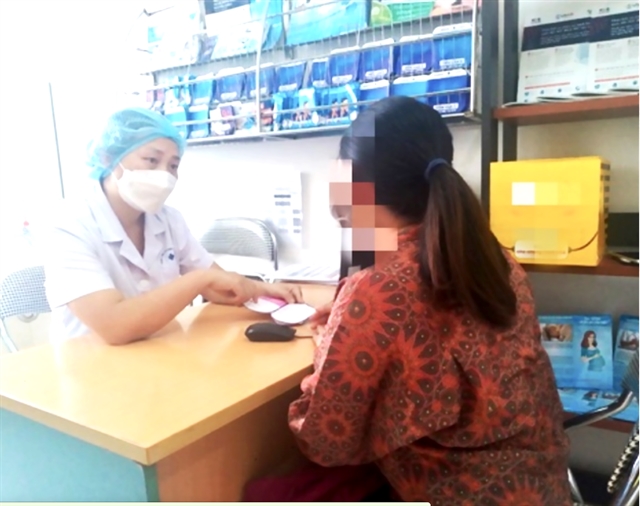 Society
Society

The statistics of Việt Nam’s Ministry of Health showed that by the end of June 2023, the whole country had 228,497 people infected with HIV who were still alive, and 113,253 people infected with HIV had died.

|
| A woman is counselled about the risk of transmitting HIV to her child during pregnancy. —Photo tiengchuong.chinhphu.vn |
HÀ NỘI — Việt Nam is striving to reduce the rate of children infected with HIV from their mothers.
A programme to prevent mother-to-child transmission of HIV is implemented in three pillars: protecting children, reducing the number of children infected with HIV from their mothers, and allowing mothers to know their health status to intervene early in HIV treatment to reduce the HIV infection rate in the community.
HIV/AIDS is one of the world's most serious public health problems. According to the World Health Organization (WHO), by 2022, there will be about 38 million people infected with HIV in the world, about 2.5 million of which are under 15 years old and 1.5 million children are infected with HIV from their mothers.
The statistics of Việt Nam’s Ministry of Health showed that by the end of June 2023, the whole country had 228,497 people infected with HIV who were still alive, and 113,253 people infected with HIV had died.
From 2012 to 2022, the number of children born to mothers infected with HIV decreased sharply, from 1,500 children to 600 children each year and the rate of children diagnosed with HIV infection also dropped sharply from 7.4 per cent in 2012 to 2.1 per cent in 2022.
The programme to prevent mother-to-child HIV transmission has been implemented since 1999 to reduce the rate of mother-to-child HIV transmission to less than 2 per cent and to end the AIDS epidemic by 2030.
According to Dr Đỗ Thị Nhàn, an expert at the Department of HIV/AIDS Prevention and Control (Ministry of Health), the programme to prevent mother-to-child transmission of HIV has received great attention from the Party, Government and units of the Ministry of Health.
Currently, the programme has been widely deployed in all 63 provinces and cities nationwide.
"The Ministry of Health has issued many guiding documents related to the programme’s implementation process. Every June is national action month on preventing mother-to-child transmission of HIV," Nhàn said.
Currently, the programme is implemented in three ways.
First, before getting pregnant, women know how to prevent HIV infection. And if the mother is infected with HIV, she learns how to avoid having an unplanned or unwanted pregnancy.
Second, HIV infection is detected early in pregnant women because detecting early means that the mother will receive intervention to prevent HIV transmission to their children, which means children will minimise the risk of contracting HIV from their mothers.
Third is how to let both mothers and babies continue receiving treatment to prevent mother-to-child transmission. Newborn babies must continue to be monitored and receive preventive treatment, nourishment, care and early diagnosis of HIV infection from mothers.
Although the programme has achieved many positive results, it has many shortcomings in some provinces and cities.
Dr. Nhàn said that although there have been guiding documents from the Ministry of Health and interventions to prevent mother-to-child transmission of HIV have been widely deployed, there still exist relatively large differences across provinces.
For example, in some large provinces and cities where HIV testing consulting services or pregnancy and reproductive care are quite popular, people have accessed these services easily so the programme has reaped positive results, the doctor said.
However, in areas such as mountainous and remote areas, services are still not available at commune- and ward-level health establishments. In some localities, HIV testing cannot be conducted at the commune level but must be sent to provincial hospitals. This is a limitation in programme implementation, she said.
Despite the groups of mothers who were detected with HIV infection and treated, there are still groups that the programme has not reached.
In 2022, among the group of pregnant women who had access to the programme, only 11 children accounting for 1.9 per cent were detected to be infected with HIV from their mothers, much lower compared to previous years.
"The question is what to do with the group that we have not been able to reach. There is certainly a group of women and their children who have not been able to access services, especially women in remote areas where services of HIV testing and pregnancy care are not available,” Nhàn said.
“This is really a concern that we are planning to review and deal with,” she said. — VNS




